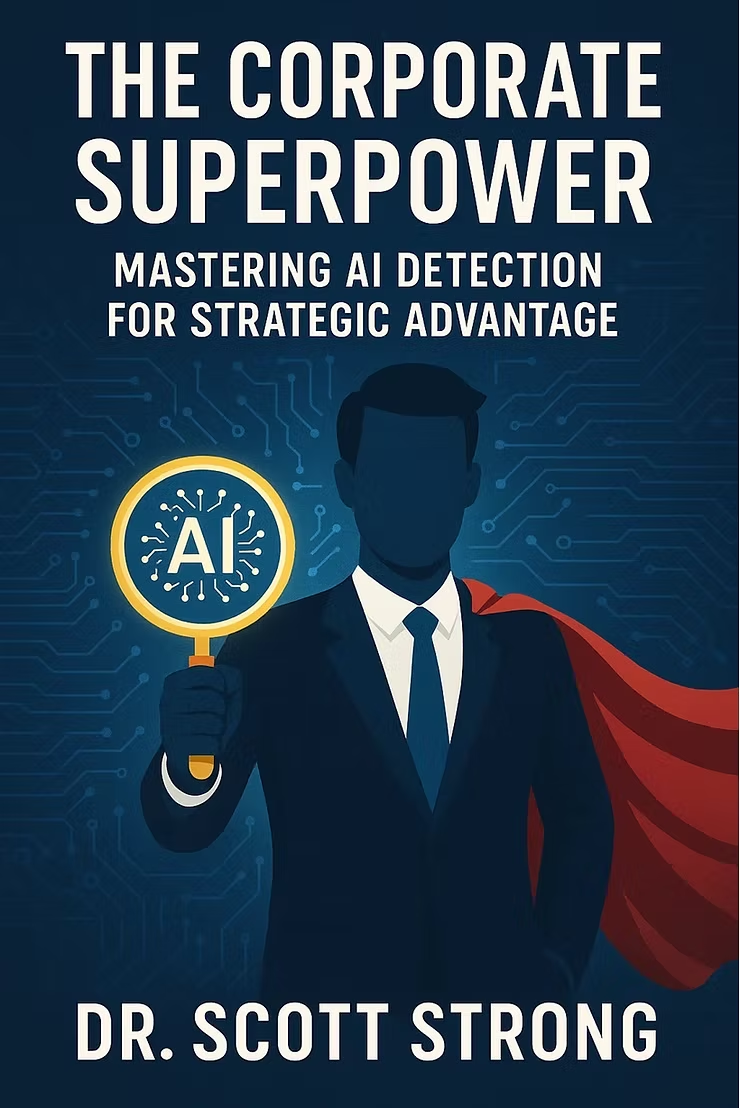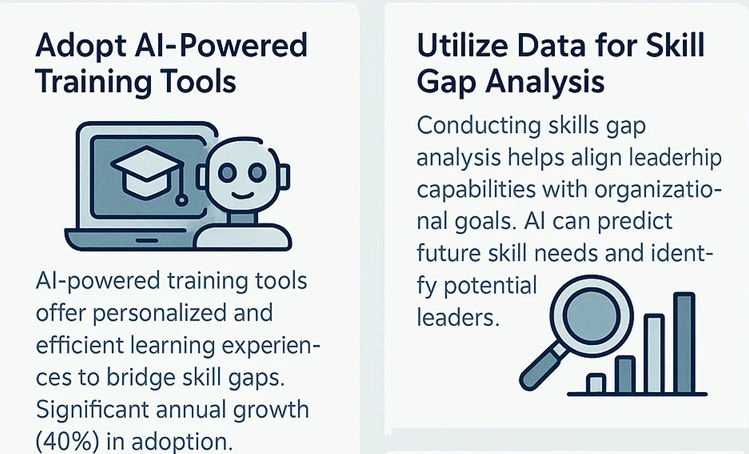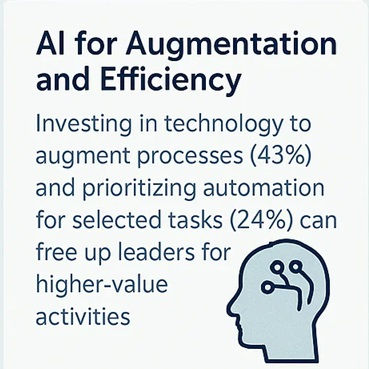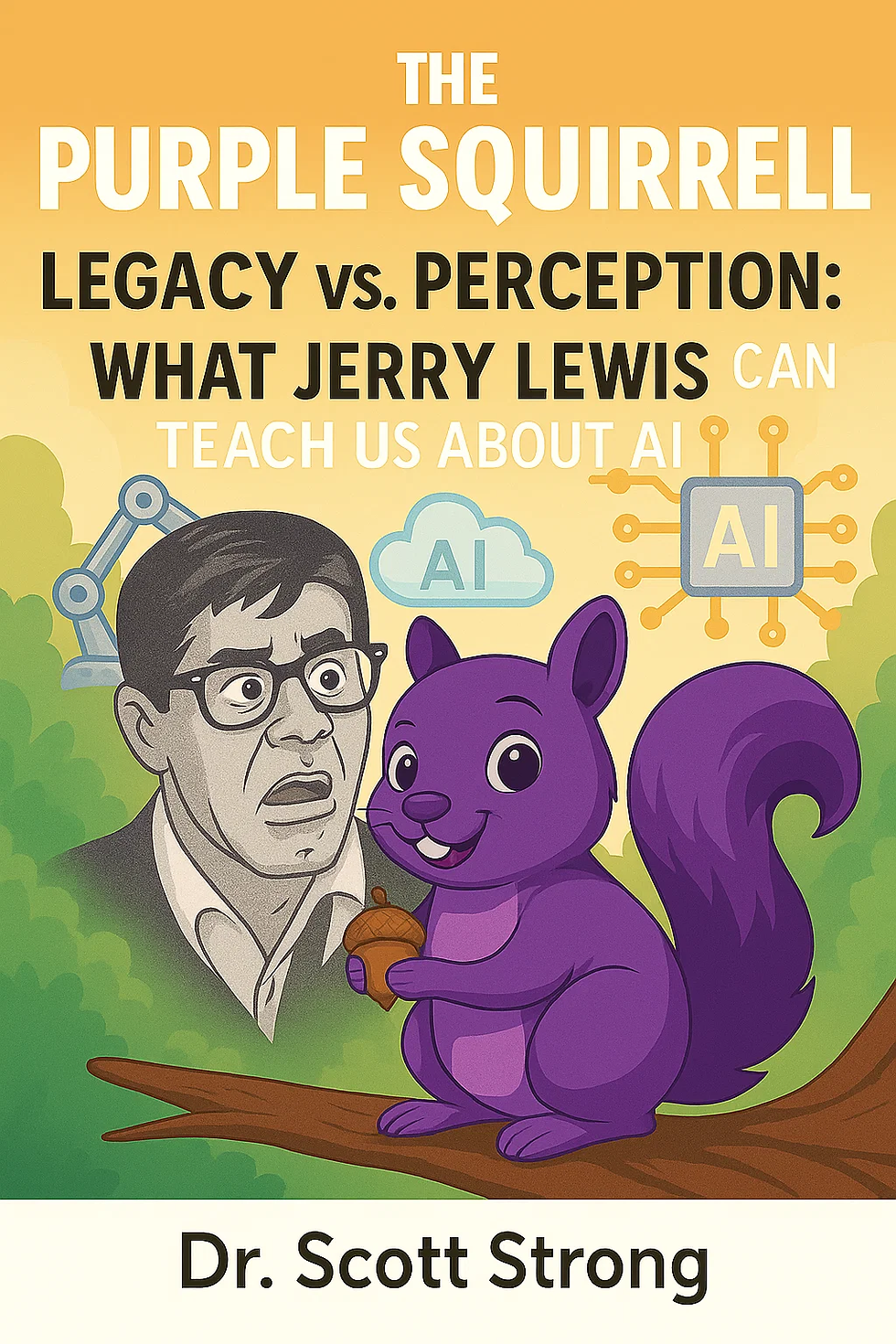The Corporate Superpower: Mastering AI Detection for Strategic Advantage
- DR. SCOTT STRONG
- Jun 24
- 2 min read

In today’s workplace, artificial intelligence no longer just supports business functions—it actively shapes them. From proposals and reports to performance reviews and internal communications, AI-generated content now saturates the corporate ecosystem. This shift demands a new leadership skill: the ability to detect when you're reading the voice of a human—or a machine.
Why AI Detection Matters
What once seemed like a fringe academic concern is now a core business competency. Leaders who develop “AI intuition” can spot hallucinated data, uncover false confidence, and prevent poor decisions before they impact operations. More than risk mitigation, it’s about sharpening discernment, protecting brand credibility, and uncovering the real thinkers in your team.
As AI use in business skyrockets, so does the potential for undetected machine-generated content to introduce errors. According to McKinsey, 78% of companies now use AI in at least one business function—a number that continues to rise. And it’s not just developers or data scientists; communication teams, HR departments, and analysts are relying on AI daily. But without clear detection skills, leaders may base decisions on content that appears confident but lacks depth or truth.

A Leadership Wake-Up Call
When AI was introduced a couple years back, a project manager submitted an analysis. The report was clean, grammatically flawless—and hollow. A key claim, that a learning had lost 15% productivity, seemed suspicious. I asked a simple follow-up: “What do you think caused that decline?” The manager froze. It turned out the figure was either misinterpreted or hallucinated by AI.
This wasn’t a minor error—it was a potential strategic blunder. But by recognizing the sterile tone and applying what I call the “Five-Minute Oral Defense” (asking the author to explain their logic beyond the page), we avoided a costly misstep.
Rethinking What ‘Perfect’ Means
AI-generated content tends to follow rigid structures with mechanical polish. While that may look impressive, it often lacks original thought. I once reviewed two project proposals: the first was flawlessly formatted, following the company template to the letter. The second broke the mold—merging sections and offering novel solutions with a passionate, human tone. The first read like a machine. The second revealed a strategic thinker unafraid to innovate. It reminded me that true insight often hides
behind imperfection.

The Disappearance of Synthesis
AI can assemble facts, but it cannot generate meaning. I began noticing company reports that felt like task lists, followed by generic conclusions like “the project is on track.” What was missing? Human insight. No struggles, no lessons, no learning moments. So I started asking new questions: “What was the hardest problem you solved this week? What concerns you most about the launch?” By shifting the expectation from reporting to reflecting, I encouraged real engagement—and rebuilt a culture where original thought mattered more than polished output for my team.
Conclusion: From First Draft to Final Judgment
AI is a powerful ally when used well—but a dangerous blind spot when used passively. Leaders must stop assuming all clean content is credible content. Instead, cultivate a culture that uses AI as a brainstorming partner, not a decision-maker. The real strategic advantage lies in knowing when you're reading a ghostwriter—and when you’re hearing a leader.






Comments